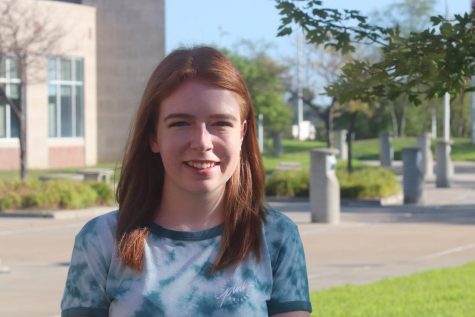Funda-mental
America’s youth needs increased mental health resources and accessibility
For support in moments of crisis, reach out to trusted individuals or call the National Suicide Prevention Lifeline at 1-800-273-8255.
March 2, 2021
There’s a problem killing more people than car crashes, more lives than natural disasters and resulting in the loss of more than 950,00 years of potential life each year. The problem? Suicide. The deeper problem? Mental health conditions and the lack of accessibility to valuable mental health resources.
For youth, the issue is especially dire.
According to the National Alliance on Mental Illness (NAMI), 50% of lifetime mental illnesses develop before the age of 14. By age 24, that percentage grows to 75%. Thus, it comes as no surprise that adolescents are struggling the most; even more so during a pandemic.
In 2020 alone, Mental Health America (MHA) found that youth between the ages of 11-17 accessed mental health screening at a rate 9% higher than the average of 2019 — and remember, those are only the children and teens with accessibility.
Locally, Nebraska perfectly displays the deficit of mental health care access.
The MHA released that the state ranks number 25 of the 51 states/districts that reported youth having experienced at least one major depressive episode in the past year. Upon first glance, this “middle-of-the-road” ranking might not appear all too bad. However, let’s compare it to a state like Maryland.
Maryland has a mental health workforce (made of psychiatrists, psychologists, counselors, therapists, specialized nurses, etc.) of lesser capacity than Nebraska. For every mental health care provider in Nebraska, there are 380 other citizens. In Maryland, the ratio is 390:1. It’s a slim margin, but the other numbers don’t lie. Maryland beats out Nebraska in access to care rankings by about 20 states — that’s a huge margin, especially for a state with less providers.
So, good on Maryland, but why are we letting Nebraska and other lacking states get by? It’s hurting our children and teens.
It’s time — it’s past time — for increased access of mental health resources for the youth population. We need the assurity that mental health conditions will be taken just as seriously as other physical conditions.
Although the federal Mental Health Parity and Addiction Equity Act (MHPAEA)was enacted in 2008 to require insurance coverage to be no more restrictive on mental health than other medical conditions, problems still persist in the effort to achieve affordable mental health care for all.
The American Psychiatric Association (APA) writes “…some plans have struggled to meet the more complex components of the law that govern how they [insurers/health plans] design and apply managed care practices such as prior authorization, reimbursement rate setting and network design, among many others.”
The MHPAEA requirements also do not extend to plans and private employers of less than 50 people.
Nebraska is in the danger zone once more, in terms of insurance, as it is rated 46 of 51 on MHA’s list of children with private insurance that covers mental or emotional problems. This is extremely alarming — how will families continuously pay for therapeutic services which can cost hundreds of dollars per appointment?
Beyond insurance coverage, we need more awareness — an Instagram story post with a cutesy reminder is nice, but it is not enough.
An institution that has the potential to significantly chip away at mental health stigmas and provide accessible resources is a place many call their second home — our schools.
Posters plaster the brick walls of Milllard West urging students not to vape or to report sexual assault, but what about posters providing resources for mental health? The tiny business cards passed around in Quality Time promoting the district’s partnership with Boystown’s Safe 2 Help hotline and Your Life, Your Voice campaign are meaningless when there is little to no additional information and education beyond the one day handout.
Where are the schoolwide campaigns? The mental health awareness club? The in-depth and “uncomfortable” conversations? All of these efforts would prove invaluable, especially in a space that spurs the constant anxiety for some to academically achieve more and more and more.
We also need to remember the nuances of the relationship between identity and mental health. According to The Trevor Project, rates of suicidal ideation are highest among members of LGBTQ+ youth — almost 3 times higher than heterosexual youth.
Additionally, MHA points out that the rates of Asians and Pacific Islanders looking for mental health resources have nearly doubled in a mere year, and “Black or African American screeners have had the highest average percent change over time for anxiety and depression, while Native American or American Indian screeners have had the highest average percent change over time for suicidal ideation.”
Mental health stigmas are often greater in these minority populations, according to the APA. While minorities must fight that reproach, they also face discrimination, potential language barriers and a lack of culturally diverse mental health providers.
These specific communities are part of our greater community, and we must do our part to help our neighbors, friends and family live their happiest and most productive lives. Let’s put up posters with LGBTQ+ mental health hotlines or connect with hospital systems to provide consistent information and resources in schools. Let’s normalize asking for help — and then being able to get it from professionals or the people we trust.
The youth of America need accessible mental health care now more than ever. With the help of legislation, schools and awareness, the goal of decreased cases of mental illness and increased accessibility is within reach.
For support in moments of crisis, reach out to trusted individuals or call the National Suicide Prevention Lifeline at 1-800-273-8255.







